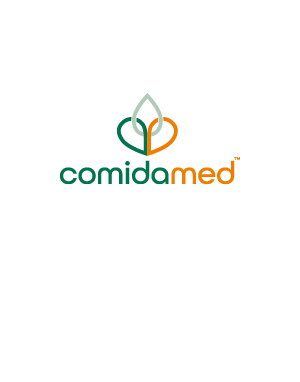Glutaric Aciduria Type 1 (GA1)
The following information provides a general overview of Glutaric aciduria type 1 and is intended for educational purposes only. It should not replace guidance from qualified healthcare professionals. Vitaflo™ International Limited accepts no responsibility for any loss resulting from reliance on the content. For comprehensive and up-to-date recommendations, please refer to national and international clinical guidelines.
What is Glutaric aciduria type 1?
Glutaric aciduria type 1 (GA1), also referred to as a ‘glutaric acidaemia type 1’ (may also be spelt ‘glutaric acidemia’), is an autosomal, recessive inherited metabolic disorder due to the deficiency of the glutaryl-CoA dehydrogenase (GCDH)1.
What is the cause of Glutaric Aciduria Type 1?
Glutaric aciduria type 1 (GA1) is caused by a deficiency of the enzyme glutaryl-CoA dehydrogenase (GCDH)1.
GCDH is involved in the breakdown of the amino acids lysine and tryptophan, deficiency results in the build-up of metabolites; glutaric acid, 3-hydroxyglutaric acid, glutaconic acid and glutarylcarnitine.
If GA1 is left untreated, this can lead to severe health problems in 80-90% of infants, such as irreversible brain damage, neurological difficulties, learning difficulties, movement disorders and even death1-2.
*Note: you may find our condition-specific resource helpful, intended for use with patients and families to explain the complex science behind the inheritance of Glutaric aciduria type 1, diagnosis and management.
For further information on resources available, please enquire: Contact page
How common is Glutaric Aciduria Type 1?
Glutaric aciduria type 1 (GA1) has an estimated global incidence of 1:90,000 to 1:120,000, with a higher incidence of 1:250 in specific high-risk communities, including Irish travellers and the Amish community in Pennsylvania1,3-4.
Testing for Glutaric aciduria type 1: Newborn screening

Most infants will present clinically unless identified by newborn screening (NBS).
NBS has become more widely implemented in Europe in recent years, but due to the rarity of Glutaric aciduria type 1 (GA1), it is still not practiced universally1,4. Some states in the USA2 and many countries in South America also have NBS for GA15-7.
Early diagnosis is crucial to prevent the potentially devastating impact of this condition.
Once a diagnosis is made, depending upon the clinical picture, management should commence immediately1.
What are the symptoms of Glutaric Aciduria Type 1?
If not diagnosed by newborn screening (NBS), individuals with Glutaric aciduria type 1 (GA1) typically present within the first 3 years of life. Approximately half of infants and neonates present with non-specific neurological symptoms such as delayed motor development, hypotonia and macrocephaly1,4.
If left untreated, 80 – 90% infants will develop irreversible neurological damage during early brain development, when an illness leads to an acute encephalopathic crisis (AEC)1-2. Morbidity and mortality are high in patients who have had an AEC, resulting in damage to the striatum in the brain1-2.
Striatal injury impacts motor function, which can vary in severity, impacting movement, swallowing and speech1-3.
For those patients identified through NBS, outcomes are more positive, particularly if there is good adherence to treatment2,8-9.
How is Glutaric aciduria type 1 managed?
Management of Glutaric aciduria type 1 (GA1) varies depending on whether an individual is symptomatic or asymptomatic.
A recent meta-analysis showed that many individuals remain asymptomatic if maintenance and emergency treatment commence before the individual becomes symptomatic1,10.
Asymptomatic individuals tend to have been diagnosed through screening, whereas symptomatic individuals tend to be those who have experienced an acute encephalopathic crisis with lasting, irreversible neurological deficits1.
Symptomatic patients
In individuals who have had a striatal injury and have neurological impairment, treatment involves management of neurological complications, often with medications and dietary intervention1-2.
Long-term management involves:
- Medications such as anti-epileptics, muscle relaxants and painkillers
- Tube feeding for those who have issues with swallowing and feeding
- Low lysine diet
Asymptomatic patients
After diagnosis, management of GA1 involves1:
- A low lysine diet
- Use of a low tryptophan, lysine free, protein substitute
- Oral carnitine supplements
- Aggressive management of illness involving the use of the emergency regimen
- Regular follow-up with a specialised metabolic centre
- Monitoring of clinical and nutritional status.
These measures are sometimes referred to as maintenance treatment, which is associated with positive neurological outcomes1-2,11. Currently, monitoring is clinically based, as there are no biomarkers which can predict outcomes1.
Initially, it was thought that dietary restrictions could be discontinued once the brain was fully developed using a cut off age of 6 years. However, data now suggests there are some benefits to continuing with a low protein diet with a low lysine content and avoiding high lysine foods beyond the age of 6 years1-2.
The most favourable neurological outcomes are associated with a lysine restriction, in combination with a lysine and tryptophan restricted protein substitute enriched with vitamins, minerals and trace elements1.
Dietary management
Glutaric aciduria type I (GA1) is managed with a low lysine diet, to avoid the build-up of metabolites to toxic levels.
The main components of dietary management up until 6 years of age are listed below:
- Low lysine diet
- Measured amounts of lysine and tryptophan according to patient tolerance
- Low protein foods
- Protein substitutes
- Emergency regimen
- Additional dietary adaptations are likely to be required if the child has endured one or more metabolic crises (e.g. texture modification, energy supplements, tube feeding)
Dietary management of GA1 after 6 years of age varies; however, published management guidelines advise that the diet can be liberalised to a protein-controlled diet, avoiding foods high in lysine1.
Low lysine diet
Current guidelines recommend the restriction of dietary lysine and tryptophan through a lysine-restricted diet rather than a low protein diet. The lysine content in natural foods varies considerably; therefore, a lysine-restricted diet is considered more precise than using a low protein diet1.
Lysine is found in a wide variety of foods, including meats, fish, eggs, nuts, dairy products, rice, cereals, and vegetables.
To help limit lysine intake, typically protein intake must be restricted in people with Glutaric aciduria type 1 (GA1) and avoidance of high lysine foods is recommended.
A measured amount of lysine and tryptophan
As lysine and tryptophan are essential amino acids, a small, measured amount of these must be included in the diet to prevent deficiency.
Management guidelines provide recommendations regarding the lysine requirements of infants and children1.
Low protein foods
As well as avoiding high lysine foods, incorporating low protein foods into the diet is equally essential for the dietary management of GA1. An adequate energy intake is very important in maintaining metabolic control.
Foods naturally low in lysine and protein include most fruits and some vegetables, fats, oils and many high-sugar foods. Specially manufactured foods, such as bread, milk alternatives, flour mixes, pasta and rice, subject to availability, can also be used.
These types of foods can also provide variety, energy and greater normality to patients’ diets, allowing for versatility in meals and flavours across the week.

Protein substitutes
Although lysine tolerance varies in patients with Glutaric aciduria type 1(GA1), total protein requirements are similar to those of individuals without it.
Total protein requirements will not be met by a low lysine diet.
Therefore, to help meet protein requirements, products known as protein substitutes (PS) are essential. They provide a lysine free, low tryptophan protein source and supply all other essential amino acids and nutrients needed to support normal protein synthesis for growth and development1.
The use of PS after the age of 6 years depends on the individual and local practice, considering guidance is to limit protein intake and avoid high lysine foods.
Some centres continue to prescribe PS after the age of 6 years, for various reasons such as food neophobia or reduced protein quality in the diet12.
The decision to continue or discontinue the PS will be discussed with individuals and families so they can make an informed decision.
Emergency regimens
Emergency management promotes anabolism and limits catabolism and is widely used in the management of inborn errors of metabolism (IEM).
In Glutaric aciduria type 1 (GA1) an acute encephalopathic crisis (AEC) can occur during febrile illness and in periods of fasting (e.g. preparation for surgery) in children 0 – 6 years of age. This is when a child with GA1 is most at risk of a striatal injury, so prompt implementation of an emergency regimen (ER) is essential during intercurrent illness to prevent neurological damage in those with GA111.
The ER involves two hourly high-calorie drinks/feeds in combination with the individual’s usual intake of the low tryptophan, lysine free protein substitute (if tolerated) given throughout 24 hours to prevent catabolism1,3.
Increasing the usual carnitine supplements in addition to aggressive management of pyrexia may also be required1-3.
In some situations, individuals may require hospitalisation during illness to support the aggressive implementation of the emergency regimen2.
How is Glutaric Aciduria Type 1 managed in early infancy?
Dietary management is ideally commenced as early as possible following diagnosis, depending upon whether the infant is asymptomatic or symptomatic.
In asymptomatic infants, this will involve balancing intakes of breast milk or standard infant formula (which provide lysine and tryptophan) with a lysine-free, low tryptophan formula for infants, to achieve good metabolic control, prevent catabolism and optimise growth.
Breastfeeding offers many benefits to mothers and infants, and management guidelines encourage breastfeeding in Glutaric aciduria type 1 (GA1)1.
For symptomatic infants, the basic principles of the diet are the same, but for those who may have had a neurological crisis, additional adaptations to the diet, such as tube feeding and/or texture modification, may be required.
A specialist metabolic team should be responsible for the management of the individual with GA1 from diagnosis and throughout life.
- Boy N, Mühlhausen C, Maier EM, Ballhausen D, Baumgartner MR, Beblo S, et al. Recommendations for diagnosing and managing individuals with glutaric aciduria type 1: Third revision. J Inherit Metab Dis. 2023;46(3):482–519. doi:10.1002/jimd.12566
- Strauss KA, Williams KB, Carson VJ, Poskitt L, Bowser LE, Young M, et al. Glutaric acidemia type 1: Treatment and outcome of 168 patients over three decades. Mol Genet Metab. 2020;131(3):325–40. doi:10.1016/j.ymgme.2020.09.007
- Dixon M, MacDonald A, White F. Disorders of amino acid metabolism, organic acidaemias and urea cycle disorders. In: Shaw V, editor. Clinical Paediatric Dietetics. 5th ed. Hoboken: Wiley-Blackwell; 2020. p. 513–98.
- Healy L, O’Shea M, McNulty J, King G, Twomey E, Treacy E, et al. Glutaric aciduria type 1: Diagnosis, clinical features and long-term outcome in a large cohort of 34 Irish patients. JIMD Rep. 2022;63(1):379–87. doi:10.1002/jmd2.12302
- Arias C, Hidalgo I, Salazar MF, Cabello JF, Peñaloza F, Peredo P, et al. Clinical and nutritional evolution of 24 patients with glutaric aciduria type 1 in follow-up at a center specialized in inborn errors of metabolism in Chile. J Inborn Errors Metab Screen. 2021;9:1–7. doi:10.1590/2326-4594-jiems-2021-0007
- Campos-Garcia FJ, Chacon-Camacho OF, Contreras-Capetillo S, Cruz-Aguilar M, Medina-Escobedo CE, Moreno-Graciano CM, et al. Characterization of novel GCDH pathogenic variants causing glutaric aciduria type 1 in the southeast of Mexico. Mol Genet Metab Rep. 2019;21:100533. doi:10.1016/j.ymgmr.2019.100533
- Sitta A, Guerreiro G, Coelho DM, Rocha VV, Reis BG, Sousa C, et al. Clinical, biochemical and molecular findings of 24 Brazilian patients with glutaric acidemia type 1: 4 novel mutations in the GCDH gene. Metab Brain Dis. 2021;36(1):205–12. doi:10.1007/s11011-020-00632-0
Related products
Browse the products available for managing this condition.
Information presented on this page is intended for healthcare professional use only. Food for Special Medical Purposes to be used under medical supervision.
Date of publication: 06/06/2025


